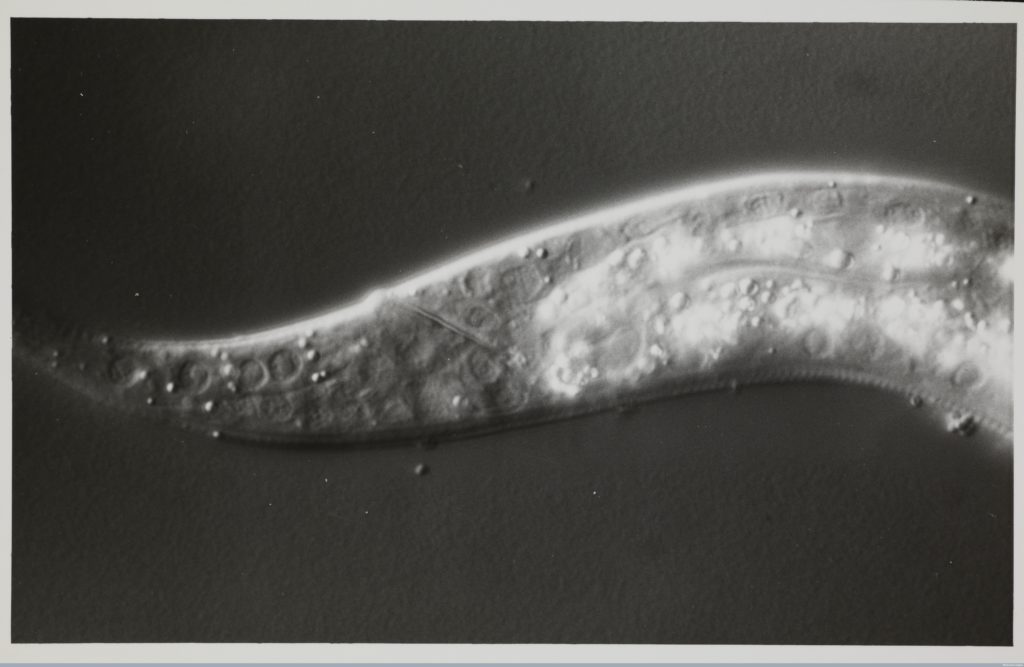The Early Worm
Wellcome Library | Digital Image | Human Genome Project
John Sulston began studying C. elegans (a species of nematode worm) in 1969 when he joined the MRC Laboratory of Molecular Biology in Cambridge. C. elegans are 1mm long, comprise of around 1000 cells and have 103 million base pairs in their genome, making them a simple organism to study but one that is complex enough to have a wider application for larger organisms – for example humans.
By 1989 Sulston, and his US counterpart Bob Waterston, had generated a map of the worm’s genome. This showed the location of certain sequences and genes that would act as key landmarks when sequencing the entire genome. This mapping was an essential step and the complete worm genome was published in 1998. Many of these skills and techniques were then applied to the human genome.
